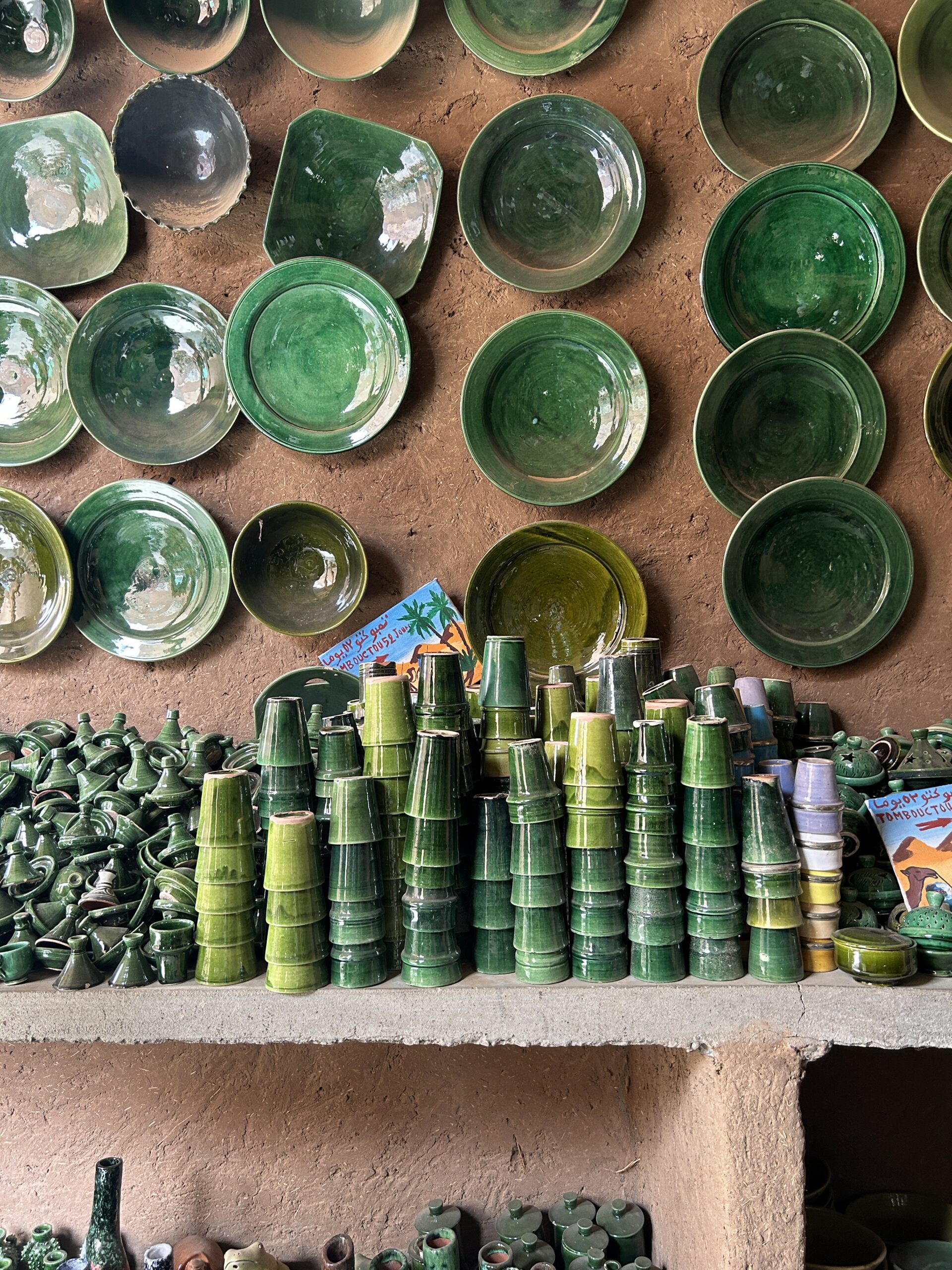There’s pressure when you take someone to a place you love—at least, I feel there is. I want them to love it too, to find beauty in its smells and sounds, to appreciate its differences from home, to connect to its people.
So, when I recently started organizing an annual trip to some of my favourite places for friends and friends of friends, I felt no small amount of (admittedly self-inflicted) pressure to make the perfect plan. These trips focus on experiencing the country through its wellness traditions; the most recent journey was to Morocco, where I was keen to show the group the incredible design scene, enjoy meditative walks through lush gardens, sink into warmth at a hammam and sip on mint tea.
Morocco is a magical place, and Marrakech a city you need to walk through to really grasp its unique energy. Quiet mornings in the Medina are the perfect balance to the celebratory commotion of Djemaa el-Fna, the main square in the old city, filled with food vendors grilling meats, henna artists and musicians encouraging passersby to join in with a dance. The mazes of shops in the souk are a thrill to walk through. It’s truly a victory when you can find where you’re going by memory instead of Google Maps, and bargaining with a vendor is always a friendly back and forth. And then, slip down a small alley and you’ll find yourself in a hidden courtyard that opens up to a restaurant serving up fresh juices, pillowy pita with muhammara, hummus and carrot dip, and couscous straight from the stove.
(For better or worse, thanks to the influence of decades of French colonial rule, there’s a European influence woven into Morocco’s menus and music, among other things, and that will feel familiar to Western visitors.)
Our adaptability in navigating the earthquake-inspired itinerary changes actually led to new and enriching experiences
There’s so much to see outside of the city too, which is why, when dreaming this trip up, I wanted to make sure we also experienced the Atlas Mountains and a night under the stars in the Sahara, as well as some time on the Atlantic coast.
Planning a trip for a group is quite different than booking a vacation just for me, of course. My route was ambitious and included spots I’d never been to before, so I made sure to set clear expectations: For starters, I emphasized that I’m neither a tour guide nor a travel agent. I’m simply someone who travels a lot, mostly for work, and I have learned about the rhythms and pacing of a good trip, and the ideal mix of planned activities and free time. I wanted our money to be responsibly spent and our time meaningfully filled, so I worked with Intrepid, an international tour operator that is B Corp certified, which means the company meets rigorous standards of social and environmental responsibility and is transparent about its choices.
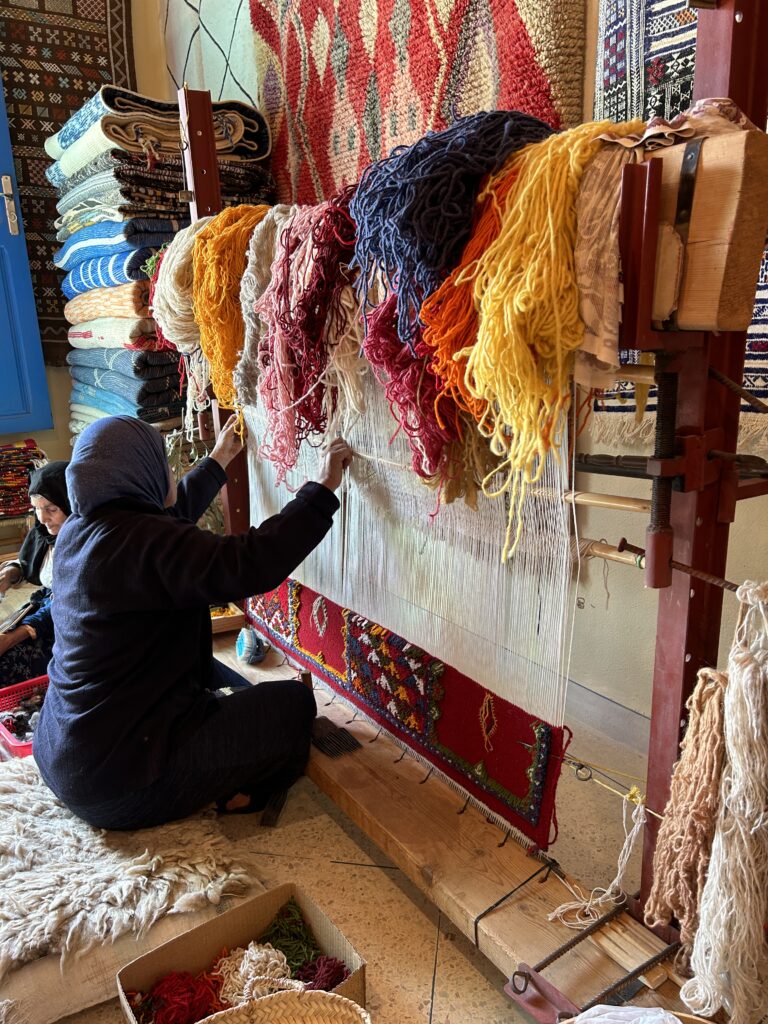
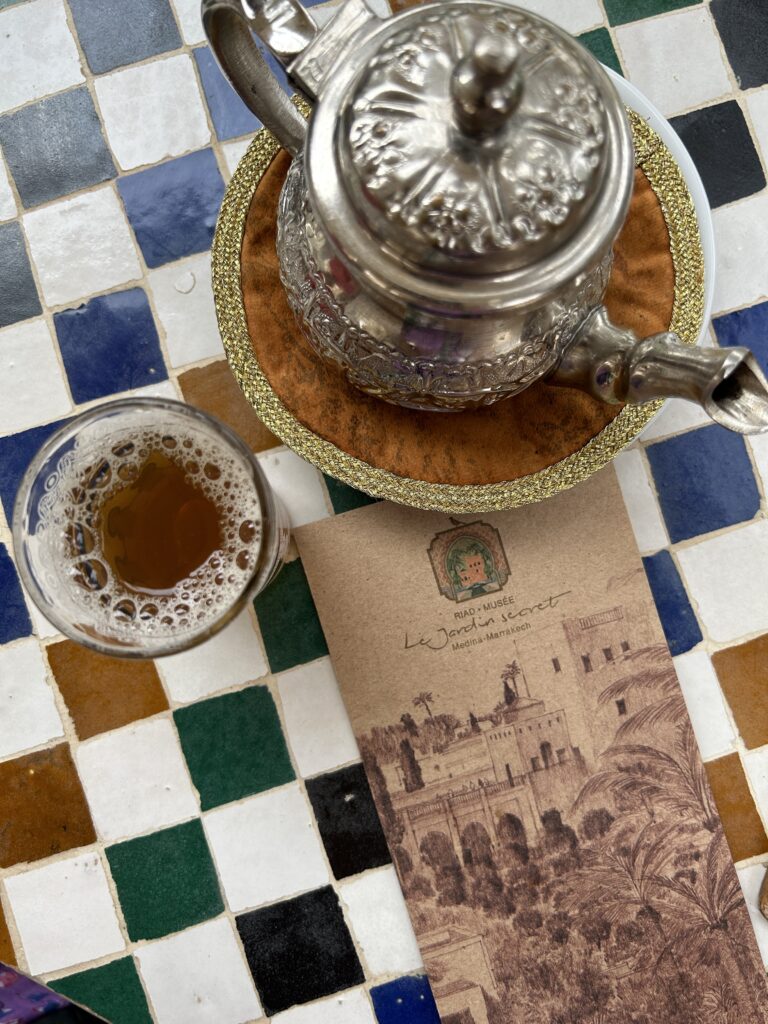
I could tell you about the hours I spent looking up riads—traditional Moroccan homes in the Medina of Marrakech that are now small boutique hotels—studying their location compared to other sights in the city and comparing guest reviews across various sites. Or whether sand bathing was still offered as an experience at our desert camp; this traditional practice involves lying down and being covered in sand, allowing the body to relax in the warmth of the sun-soaked sand. Or the number of times I google-mapped our long drive from Merzouga, the town at the end of the road leading to the Sahara Desert, to Taroudant, near the coast, trying to predict how cranky the eight-hour drive would make people. There were weeks of sending emails back and forth to Intrepid trying to ensure that we were getting the most for our money, and participating in experiences we’d remember for the rest of our lives.
However, I’ve learned that the most essential thing to plan for when organizing a trip of any kind is the unplanned. Five weeks before we were to land in Marrakech, the city and the Atlas Mountains to its south were hit by a powerful earthquake.
My trust in Intrepid’s team was never in doubt; they had several tour groups on the ground when it happened, so I knew they wouldn’t be sending us into a situation that couldn’t accommodate us. But plans had to change. Almost every night’s accommodation had to be revised. We were meant to spend a night with a family in the Atlas Mountains, which was no longer an option because of the earthquake. As we departed Canada, I wasn’t sure how the week ahead would unfold. We didn’t fully know the state of the region we’d be landing in, and if there were more changes to our itinerary, I wasn’t sure how flexible the group would be—a layer of stress that I strived to keep hidden from everyone else.
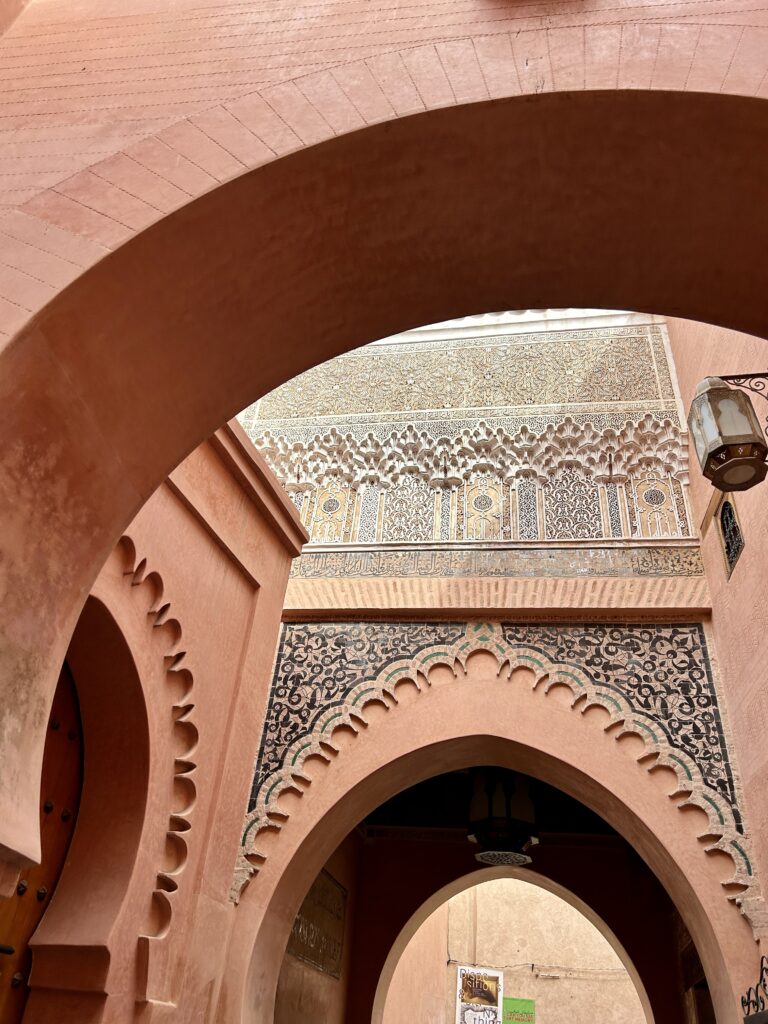
We landed, met our guide and drove into the city. There were few signs of the recent earthquake in Marrakesh. Streets were quieter than I remembered, but it was generally business as usual and we were welcomed warmly. We had a walking tour of the city, learning about the city’s history, recent and otherwise. Spending time sipping tea and listening to the birds chirp in the Secret Garden, a botanical garden hiding in plain sight behind the walls of a 19th-century palace, was a balm after the plane journey and time adjustment. And so was Morocco’s blend of Arab, Berber, French and African influences, which mirrors the diversity so many third-culture kids are familiar with.
On day three, our road trip began. We drove through the Atlas Mountains, where signs of the earthquake were still obvious, some families living in emergency tents. Though our original plans had changed, I noticed that our new accommodation in the mountains was located near Tawesna, a women-run tea salon and restaurant that serves up traditional Amazigh dishes, so we decided to stop here for lunch after touring Ait Ben Haddou, a UNESCO designated ksar (fortified village) on the former caravan route between the Sahara and Marrakech. We spent an hour learning the art and science of the Moroccan tea ceremony, including the importance it has for building community and the rationale behind pouring the tea from a height of 12 inches or more (it creates foam to top the tea!).
Get the
Three from 3
newsletter
Join our global community of sharp, curious thinkers to receive a carefully curated email of the three most important things to read, see and do this week.
Listen and learn.
Tune into Third Culture Leaders, a podcast hosted by our co-founder and publisher, Muraly Srinarayanathas.
Explore how leaders skillfully navigate multiple cultural landscapes, leveraging their diverse backgrounds to drive innovation and change.
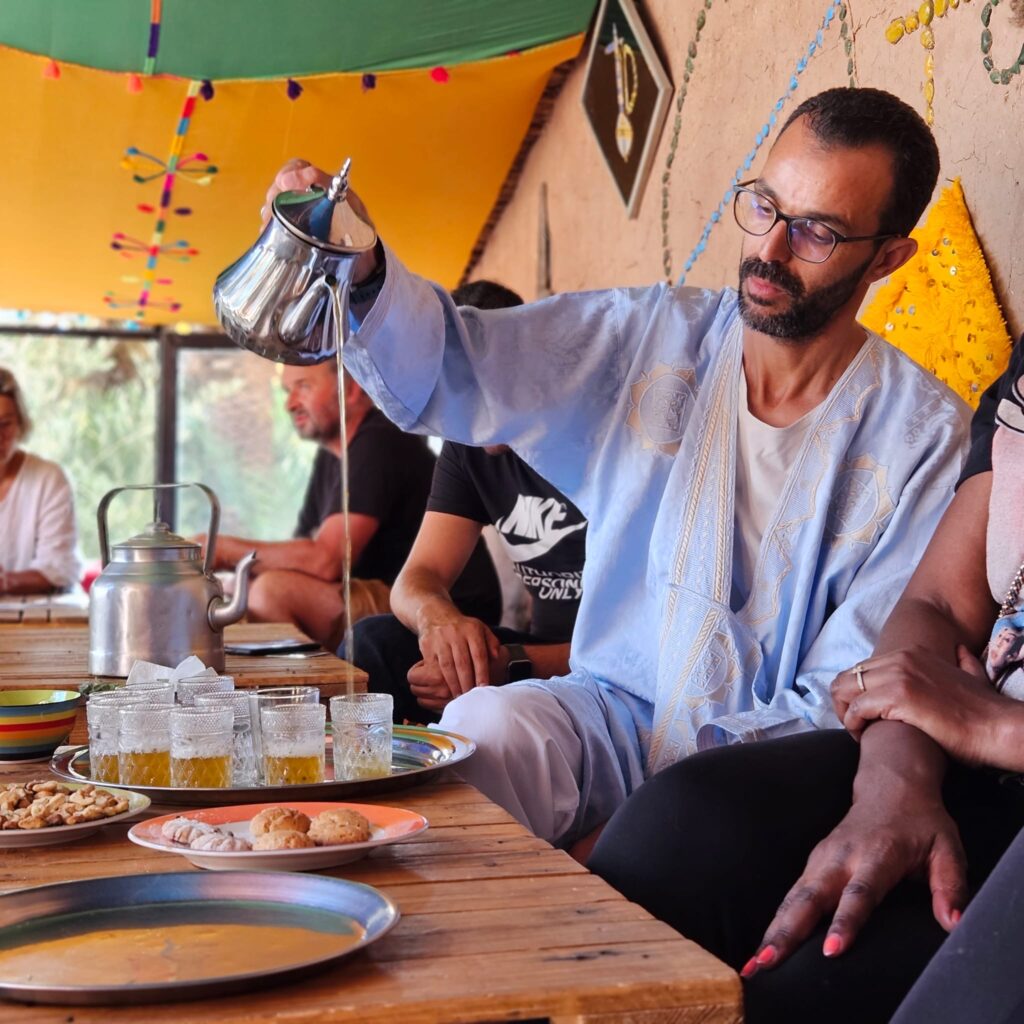
We wound our way down to the Sahara for a night of glamping, welcomed with a generous spread of traditional dishes—tagine, kebabs, roast potatoes—and our hosts singing Amazigh songs under the moonlight. That very long drive I was worried about turned out to be a breeze. We sang songs, and made another impromptu stop at a rug-making co-operative that I spotted near where we ate lunch.
We then returned to Marrakech for our last night in Morocco, where we gathered for a final dinner together and recounted our favourite moments. Everyone had something that topped their list, mentioning moments that they felt were once in a lifetime.
During the week, I had made mental notes of things that could have been better, and couldn’t help but remember the hotels we were supposed to stay in. But the reality is, our adaptability in navigating the earthquake-inspired itinerary changes actually led to new and enriching experiences. Plus, no one else noticed or minded. They were as captivated as I had been on my previous visits. In the end, everything went perfectly according to plan.
